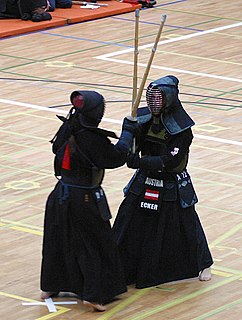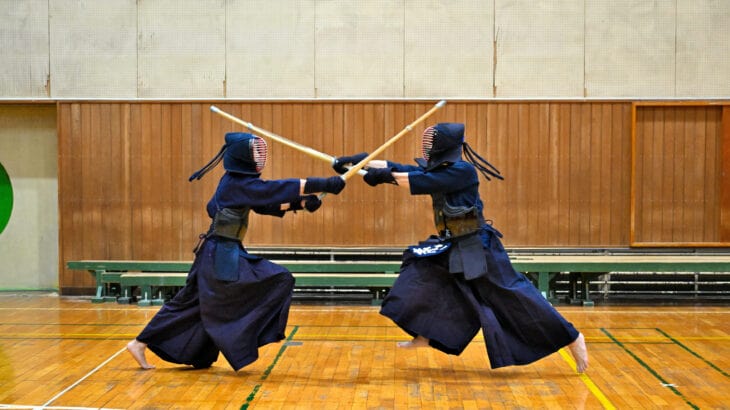
目次
- 1 How to become a 2nd Dan Kendo player – Basic information
- 2 Two-stage examination requirements – what you need to know
- 3 effective training methods
- 4 Mental preparation – mindset
- 5 Points for success in the examination
- 6 Experiences of those who passed the second stage
- 7 Growth and activities after second-dan kendo
- 8 Frequently asked questions and answers
How to become a 2nd Dan Kendo player – Basic information
The 2nd Dan rank in Kendo indicates that you have mastered the basic techniques and knowledge of a Kendo practitioner.
This dan requires the mastery of techniques one step further than the first dan, as well as a deeper understanding and practice of the spirit of kendo.
By advancing to 2nd Dan, you will definitely improve your own skills as a Kendo practitioner, and at the same time, you will be expected to develop your teaching abilities.
At this stage, the focus is not just on honing one’s technique, but also on the inner growth and improvement of humanity that can be gained through Kendo.

Two-stage examination requirements – what you need to know
Kendo’s 2-dan examination requires a deep understanding of basic kata and tactics, as well as skill at Sho-dan or above.
During the judging, players will be evaluated on things such as accurate striking techniques, maintaining an appropriate sense of distance, and ability to adapt to the opponent’s movements.
In addition, the judges will not only strictly check the accuracy of the techniques, but also the overall kendo posture, including how to handle the shinai, footwork, and spirit.
In order to pass the examination at this stage, in addition to the skills honed through daily practice, mental concentration and calmness are also required.

effective training methods
Specific practice plan for obtaining 2nd Dan
When training to aim for 2nd Dan in Kendo, it is important to improve both technical accuracy and physical strength. We recommend that a specific practice plan include the following elements:
- Repeated practice of basic techniques : Thoroughly practice basic techniques (uchikomi, footwork) during daily practice to improve the accuracy of techniques.
- Kata practice : Through Kata, you will understand the flow and rhythm of Kendo movements and improve your overall technique.
- Conducting interpersonal training : We frequently practice in the form of actual matches to develop practical skills and decision-making skills in actual combat.
- Strength Training : Incorporate running and strength training to improve your endurance and explosive power during competition.
- Mental training : Cultivate mental strength through meditation and visualization (picture the success of the competition or judging in your mind).
By continuing to practice these exercises, you will be ready for the 2-dan examination, and will not only improve your technique, but also balance your mind, technique, and body.

Mental preparation – mindset
Mental preparation and mental advice for the examination
Mental preparation is just as important as technical practice when competing in Kendo judging. Since your mindset can greatly influence the outcome of the examination, we recommend that you keep the following points in mind:
- Stay Calm : It is important to stay calm and stay focused even under the pressure of judging.
- Developing self-confidence : The key to success is believing in your own skills and abilities and approaching the game with confidence.
- Maintaining a positive psychological state : Having positive self-talk and eliminating negative thoughts increases your mental strength.
- Civility and Humility : In accordance with the spirit of Kendo, contestants are expected to respect civility and approach the judging with a humble attitude.
Through these mental preparations, you will be able to maximize your performance in Kendo examinations and surpass your own limits.

Points for success in the examination

Experiences of those who passed the second stage
Experiences of successful candidates and advice from them
We will explore the path to success in passing the examination through the experiences of those who have passed the Kendo 2nd Dan exam.
These testimonials provide valuable insight into specific preparation and mindset for the examination.
-
The importance of long-term preparation : Many successful applicants emphasize the importance of starting preparation several months before the examination. It is recommended that you use this period to hone your skills and improve your physical strength.
-
Thorough practice of basic techniques : Successful swordsmen all agree that thorough practice of basic techniques directly leads to success. Repetition during daily practice creates the foundation for performing techniques with confidence.
-
Strengthen your mental strength : At the judging stage, not only your technique but also your mental strength will be tested. Successful candidates report that meditation and positive autosuggestion help them perform at their best under pressure.
-
Use of mock examinations : Experienced people speak about the effectiveness of mock examinations. By following the same format as the actual examination, you will be able to get used to the tension of the examination day and be psychologically prepared.
-
Feedback from your instructor : Receiving regular feedback from your instructor will help you overcome your technical weaknesses and produce better results. You should actively seek that feedback, especially before the review.
The lessons learned from these experiences are extremely valuable in preparing for the Kendo 2-dan examination.
The words of those who have actually experienced the judging will serve as guideposts for swordsmen who will take on the judging in the future.

Growth and activities after second-dan kendo
Kendo life after obtaining 2nd Dan and its influence
The growth and activities that occur after obtaining 2nd Dan in Kendo greatly contributes not only to an individual’s Kendo technique, but also to their spiritual maturity.
The rank of 2nd Dan indicates that a person has mastered a certain level of basic techniques and tactics in Kendo, and based on this, further technical improvement and growth as a person are expected.
- Technical Evolution : After attaining 2nd Dan, a swordsman has more opportunities to learn and practice even more advanced techniques and tactics. In-person training requires the use of more complex techniques and strategies, which improves overall technique.
- Developing leadership skills : Second-dan swordsmen are often involved in teaching beginners and lower-level students. This will help the instructors to deepen their understanding as well as improve their communication skills and teaching techniques.
- Contribution to the community : Due to a sense of responsibility as a 2-dan, you will become active within the kendo community, and are expected to contribute to tournament management support and kendo promotion activities in the local community.
- Personal growth : The experience gained through Kendo greatly contributes to personal growth. Mental training increases your ability to self-regulate and can have a positive impact on your daily life.
Kendo life after earning 2nd Dan not only provides opportunities to improve, but also to grow as a person and contribute to wider society.
This dan is the beginning of a new challenge and a step to delve deeper into the path of kendo.

Frequently asked questions and answers
Common questions regarding two-stage examination
In order to resolve the questions and concerns that swordsmen have as they prepare for the 2nd Dan examination in Kendo, we have compiled a list of frequently asked questions and answers regarding the 2nd Dan examination.
These questions are intended to remove barriers to learning Kendo and help you better prepare.
-
What are the conditions necessary for second-stage examination?
- Second-dan examination usually requires participation in training for a certain period of time. Although the specific period may vary depending on the Kendo federation of each country or region, it is recommended that you practice for approximately 1 to 2 years after obtaining Shodan. In addition to technique, kendo etiquette and correct execution of kata are also evaluated.
-
What technical elements are emphasized in the review?
- In terms of technique, emphasis is placed on the accuracy and strength of basic strikes, attack and defense with appropriate distance, and accuracy of form. In addition, the overall movement being judged must have flow and beauty, and whether each movement is connected smoothly will also be evaluated.
-
What should I keep in mind during the examination?
- In addition to demonstrating technical ability, the judging requires a sincere attitude towards Kendo and mental concentration. To prepare before the examination, it is important to practice sufficiently, calm your mind, and approach the examination with confidence.
-
What should I do if I fail the second stage examination?
- Failing an exam is not at all uncommon. If you fail, we recommend that you use the review feedback to find areas for improvement and implement specific improvement measures for the next review. Promote your technical and mental growth through continuous practice and reflection.
These FAQs are intended to provide answers to common questions faced by swordsmen preparing for the Kendo 2-dan examination, to alleviate their anxiety about the examination, and to set them on the path to success.



